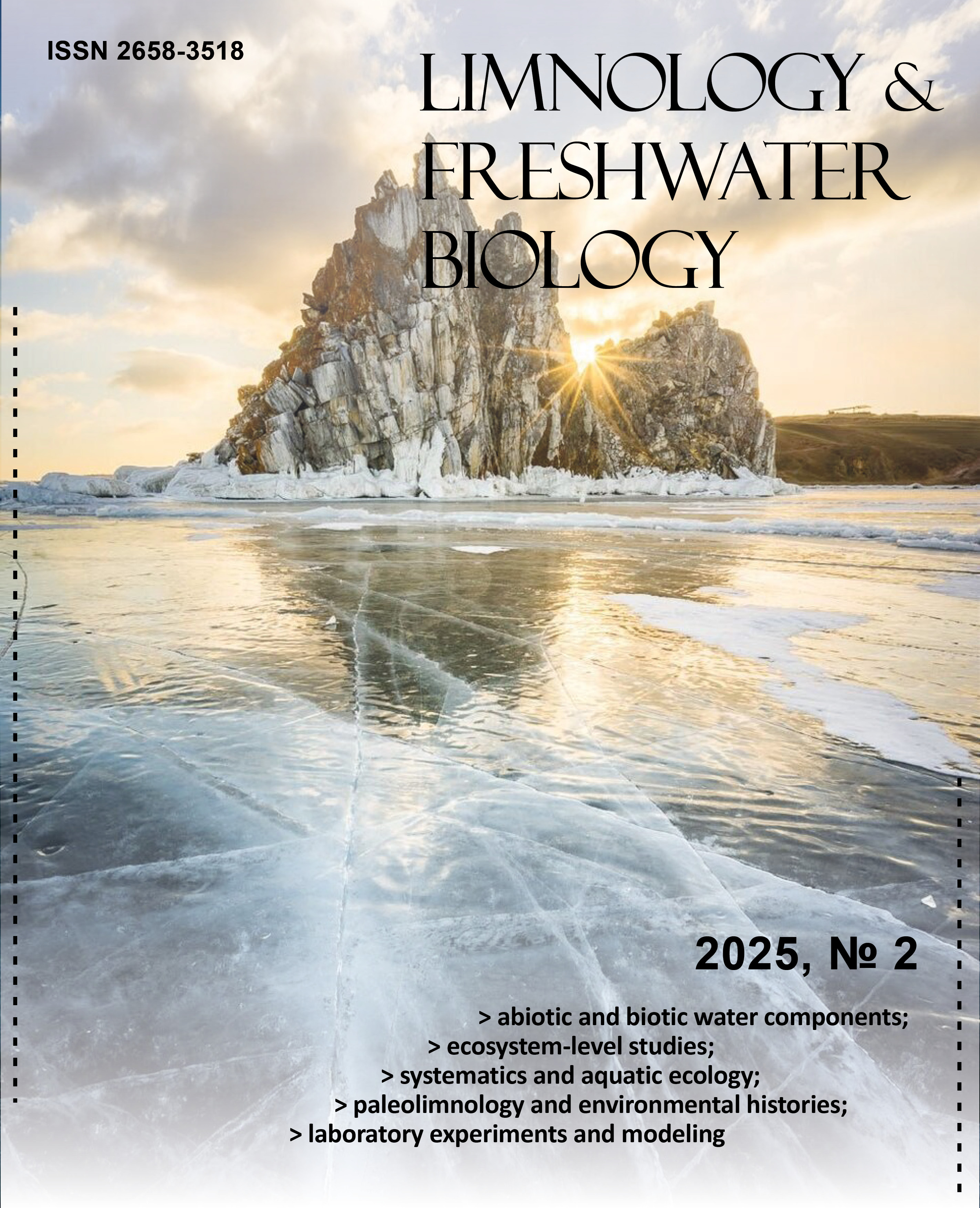Subaquatic landscapes of Kenon Lake – the cooling reservoir of Chita TPP-1
DOI:
https://doi.org/10.31951/2658-3518-2025-A-2-187Keywords:
subaquatic landscapes, natural-technical system, thermal power plants, geoecological situation, benthic invertebrates, Kenon Lake, geoinformation systemsAbstract
Natural-technical systems are changing under the influence of climate and anthropogenic activities. Understanding the functioning of such systems is necessary in order to manage them and predict their development. The functioning of cooling reservoirs depends on climatic changes, changes in the level regime and the thermal effect of water discharge from thermal power plants. Understanding the geoecological situation in the bottom subsystem of a cooling reservoir is possible based on its study using a landscape approach. This approach is just beginning to be applied to the study of reservoirs. The purpose of the study was to identify and map the subaquatic landscapes of the main part of Kenon Lake. Six facies have been identified in the cooling reservoir of the Chita TPP-1. Facies differed in the type of bottom sediments, the presence of vegetation, the species composition of zoobenthos, as well as their quantitative and qualitative indicators. Facies are grouped into two types of landscapes. They differed in depth, type of sediments and composition of benthic invertebrates. The heated waters from Chita TPP-1 cause the formation of subaquatic landscapes in the northwestern and western parts of Kenon Lake. The results of the study show the current state of the main part of the subaquatic landscapes of Kenon Lake, formed under the influence of natural and natural-technical factors. It gives the opportunity to use geoinformation systems to analyze changes in the subaquatic landscapes and assess the geoecological situation in the bottom subsystem of the Kenon Lake.
Downloads
Published
Issue
Section
License
Copyright (c) 2025 Limnology and Freshwater Biology

This work is licensed under a Creative Commons Attribution-NonCommercial 4.0 International License.

This work is distributed under the Creative Commons Attribution-NonCommercial 4.0 International License.






